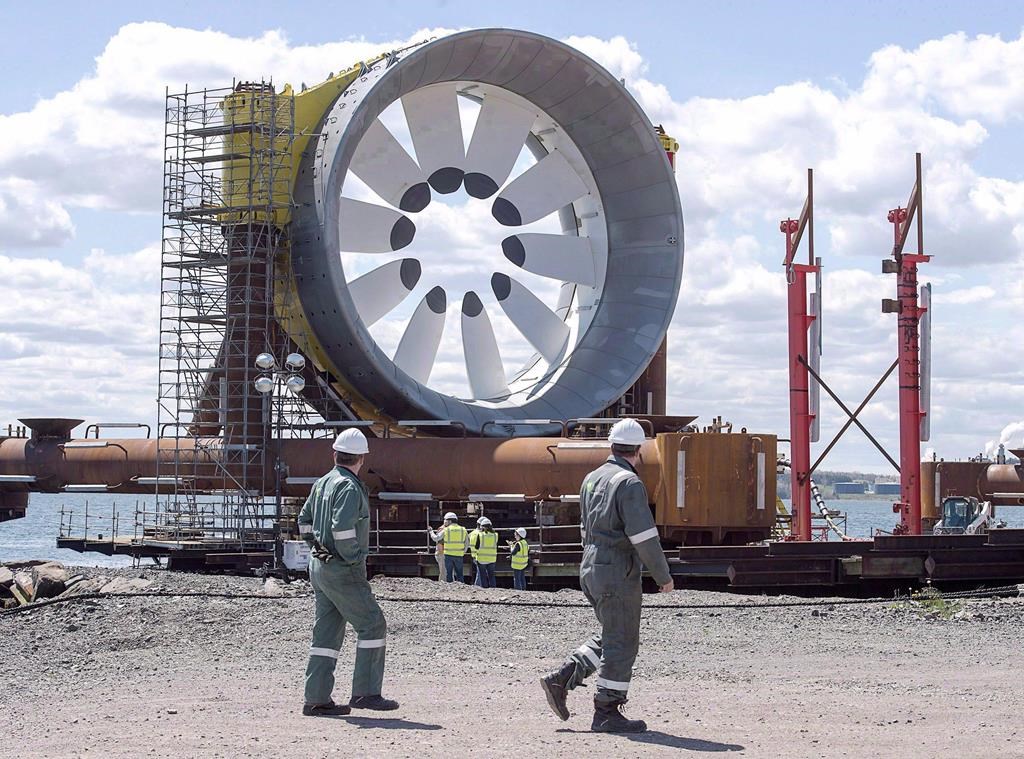A decision by the Supreme Court of Nova Scotia has revealed that the Cape Sharp Tidal turbine was “damaged beyond repair” in September, seeming to contradict public statements made at that time by partners in the tidal energy project.

The experimental in-stream tidal turbine, located in the Bay of Fundy, was a joint operation between Dublin-based OpenHydro Ltd. and Emera Inc., the parent company of Nova Scotia Power.
Emera pulled its support from the project soon after OpenHydro declared bankruptcy.
READ MORE: Emera Inc. left with no ‘practical choice’ but to pull support from Cape Sharp Tidal project
Justice Michael Wood, who is overseeing the liquidation of OpenHydro Ltd., issued a decision on Friday for a 30-day stay in proceedings to allow OpenHydro to put together an offer to its creditors.
In his decision, Wood wrote that the experimental in-stream turbine was deployed in July 2018, but by “September 2018, the turbines had been damaged beyond repair and were incapable of generating electricity.”
It’s a detail that was never made public, with Emera and OpenHydro telling the Canadian Press on Sept. 18 that they were working to determine why the rotor was not turning.

Get daily National news
Emera said at the time that experts believed a component failure in the generator “caused sufficient damage to prevent the rotor from turning.”
That was the last public update.
Nova Scotia’s Department of Energy and Mines referred Global News to Emera in response to questions about why the updated status of the project was not publicized.
“The turbine belongs to the private sector, and it’s up to the companies involved, the receiver and the courts to settle these matters,” wrote JoAnn Alberstat, a spokesperson for the department, in an email.
“The Department of Energy and Mines continues to ensure the turbine is monitored and safe, and that Nova Scotia’s interests are represented in the court processes.”
Stacey Pineau, a spokesperson for Emera, says the company was aware in September that the turbine was damaged beyond repair. Pineau directed Global News to a statement that noted “a team of former OpenHydro employees who had worked to restart environmental monitoring equipment on the turbine believed that an internal component failure in the generator caused sufficient damage to prevent the rotor from turning.”
The statement makes no reference to the turbine being damaged beyond repair.
Fundy FORCE, which operates and monitors the site where the Cape Sharp Tidal turbine was located, says it shared an update on its Facebook page in September informing the public about the damaged turbine.
The update is a Canadian Press article published on Sept. 18 stating that work was ongoing to determine why the rotor was not turning.
In July, Cape Sharp Tidal successfully connected the massive, two-megawatt in-stream tidal turbine to Nova Scotia’s electricity grid. It was the second time that Cape Sharp Tidal has installed a turbine on the floor of the Bay of Fundy to generate electricity from the world’s highest tides.
In a historic first, Cape Sharp Tidal’s first turbine was hooked up to the grid in November 2016, but it was later removed for inspections and servicing in June 2017.
In 2009, an in-stream prototype was torn apart by the bay’s powerful currents, which can move at 18 kilometres per hour.













Comments